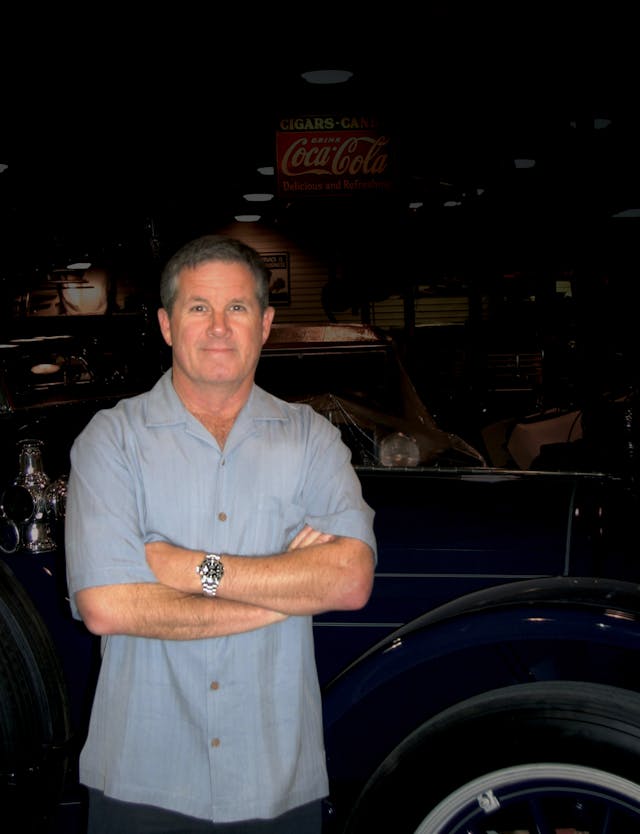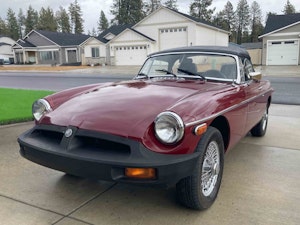Media | Articles
Confessions of a car restorer
Classic car restoration virtuoso Bob Mosier is calling it quits. Since starting his career 49 years ago as a teenager working for Phil Hill, he’s practiced his craft on hundreds of award-winning cars ranging from Brass Era Pierce-Arrows to Art Deco-inspired Talbot-Lagos. A few weeks before closing his shop in Inglewood, California, the 67-year-old Mosier reflected on how the collector car hobby has changed over the past half-century. The transcript of this conversation has been edited for length and clarity.
How’d you get together with Phil Hill?
I loved cars and worked on them all the time. I knew Phil because we lived in the neighborhood [in Santa Monica]. I would ride there on my bicycle when I was kid, and I would drive there and hang out when I got older. When I graduated from high school, he asked me to come work for him at his house. I didn’t know anything about old cars, but my attitude was: If Phil Hill likes ’em, I like ’em.
What was his restoration philosophy?
Phil believed that his best experiences with automobiles were always when they were new. So that was the goal. The idea was to do whatever it took—re-machine, re-bush, re-bearing, realign—to make the car function like it did when it was new.
Marketplace
Buy and sell classics with confidence

You were there when Hill and Ken Vaughn bought two collections and began restoring cars on spec. How did they start restoring cars for other people?
We were conspicuous because we were on the street outside Phil’s house, painting things, removing things, repairing things. Friends would come around and ask, “Can I get you to fix this or that on my car?” The answer always was, “Well, we really don’t do that. These are cars that belong to us, and we’re fixing them up for sale.” Eventually, a local eye doctor prevailed upon Ken and Phil to restore his 1931 Packard. That was the first car they restored for money. Hill & Vaughn was the first place in Southern California where you could take your car unrestored through the front door and have it come out the back door restored. Otherwise, you were your own general contractor, and you ferried your car from the engine overhaul guy to the paint and body guy, then to the upholstery guy, then to the tire and wheel guy, then to the brake guy.
Of course, the collector car universe was much, much smaller back then.
It was a small hobby. When I was a kid, people who restored old cars were thought to be a bit quirky. Why would you want to horse around with a 50-year-old car? The first time I went to Pebble Beach in 1972, it was a small show. There were 50, 60 cars there, and I would park on the tennis courts with my camper and sleep overnight. Now, you can’t get within five miles of the place. The event’s gotten bigger and more prestigious. The demographics have changed.
How so?
We started out in the ’70s working for millionaires, and now we’re working for billionaires. It’s a whole different milieu. Pebble Beach is just one stop for the jet set. They go to the Kentucky Derby, they fly over to Europe for this, they go to China for another thing, they live HUGE lives.
We started out in the ’70s working for millionaires, and now we’re working for billionaires. It’s a whole different milieu.
We did a job for a guy one year, and at the same time we were restoring his Bugatti, he was having a home built, he was having a yacht built, he was having a plane customized. So how could he possibly devote the emotional attention to a car that the hobbyists used to back when the car was their primary focus?
The financial calculations have changed too, haven’t they?
In the ’80s, the cars began to be quite a bit more valuable, and then in the ’90s, there began to be a speculative element where guys were working an equation in their mind: If I spend X on the car and put B into it, I want to sell it for X + B + a profit.
For the first 10 or 15 years I was in the business, a car was not an investment. I draw a parallel to a boat in the marina. You buy a yacht and you start writing checks, and you don’t stop until you get rid of that boat. Nobody’s sitting at the bar of the California Yacht Club imagining they can sell their boat for a profit.
Let’s switch gears and talk about the restoration shop side of the business. You left Hill & Vaughn to form your own company in 1978. Why?
At that time, we had 25 guys at Hill & Vaughn, and to keep them busy, we were working on cars that five or eight years earlier we wouldn’t have looked at sideways. I was very selective. I didn’t want to restore your car if I sensed you weren’t interested in doing a really careful, really thorough job. When a customer comes in and says, “I want to come up just a little bit short of perfection,” that’s code for “I don’t want to pay the normal price.” I wasn’t willing to make the compromises that come along with meeting a bottom-line number. I wanted to be in the business of “best effort.” Every decision you make is easy because you just do it the best way you could possibly do it. But you need a cooperative customer who understands that a really careful, really thorough job is really expensive.
How did things go when you opened your own shop?
I started with one guy, Greg Morrell. Our first job was a 1937 Packard Twelve Convertible Victoria. The very first show we ever went to was at the Ambassador Hotel on Wilshire Boulevard. It was the most prestigious show in Southern California. We won Best of Show, and at Pebble Beach, we won our class and were runner-up in Best of Show. So immediately, the phone was ringing. At the risk of boasting, I’d say our jobs were the nicest on the West Coast—better than Hill & Vaughn, actually, because we were able to control the work better, and we were working more thoroughly, more carefully, to higher standards. For quite a while, we were the shop to beat if you wanted to win prizes.
But as times changed, so did your approach, didn’t it?
My attitude at first was: Only I know what you should do with your car. I would do only best effort, 100 point, every bushing, every bearing, every seal brand new. Then I evolved to the point where if you came to me with a project, and you had some ideas that didn’t rhyme with mine, I could suffer your ignorance and let you have what you want. Then I evolved even further to the point where I am today, where only you know what you want to do with your car, and it’s none of my business.
My attitude at first was: Only I know what you should do with your car. I would do only best effort, 100 point, every bushing, every bearing, every seal brand-new. I evolved … to the point where I am today, where only you know what you want to do with your car, and it’s none of my business.
A guy like [mega-collector] Chip Connor has a lot of cars, some of which we have restored to absolute perfection. But other cars just aren’t going to be lavished with that level of attention.
And, of course, attitudes about restoration changed too, right?
Phil, Ken, and I were some of the instigators of the over-restoration approach. It was akin to what the guys were doing with hot rods at custom car shows. Everything was bejeweled, everything was glossy.

I like to think that the 1933 Packard 12-cylinder Dietrich Convertible Victoria I did for [former Los Angeles Times publisher] Otis Chandler helped start the pendulum moving in the other direction. It was EXACTLY like a brand-new 1933 Packard Twelve. It was done accurately, and it was done authentically, and it was well-received.
What do you make of the fascination with barn finds and preservation cars?
A barn find is novel, yes, and it’s probably very low-mileage. But one of the timbers of the barn fell in and broke the roof, and nobody ever drained the water out of the engine, so it rotted clear through the block, and now you literally can’t drive the car. That’s not a preserved car. That’s a dilapidated car. A preserved car is a car that’s always been in service. It probably had its top replaced at some point, and it’s probably been repainted here and there and perhaps entirely. But it’s presentable in sort of original condition, and it’s well enough preserved mechanically that it can be used without any danger to itself. Those cars are very difficult to find, and very valuable when you do.

You’re pretty well preserved yourself. Why are you closing your shop?
I’ve enjoyed this business. Trust me, I will be eternally grateful for the career I’ve had doing this stuff. But I’m weary of it. I’ve done it long enough. One by one, the guys here aged out and retired, and I didn’t replace them. I’m at a point now where I can lease this building, and the tenant will have to pay me more in rent than I normally make in a month. So I have that happy scenario where I go home and I get a raise.
Via Hagerty Insider











